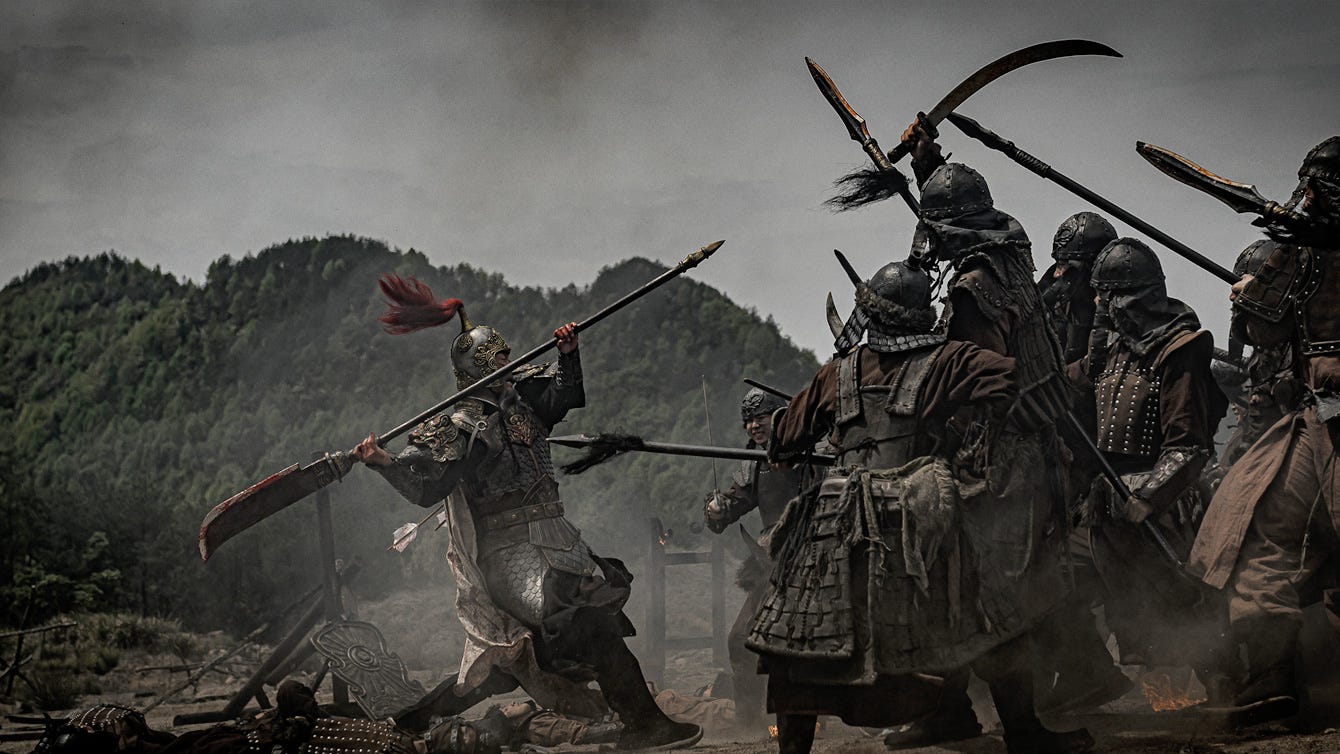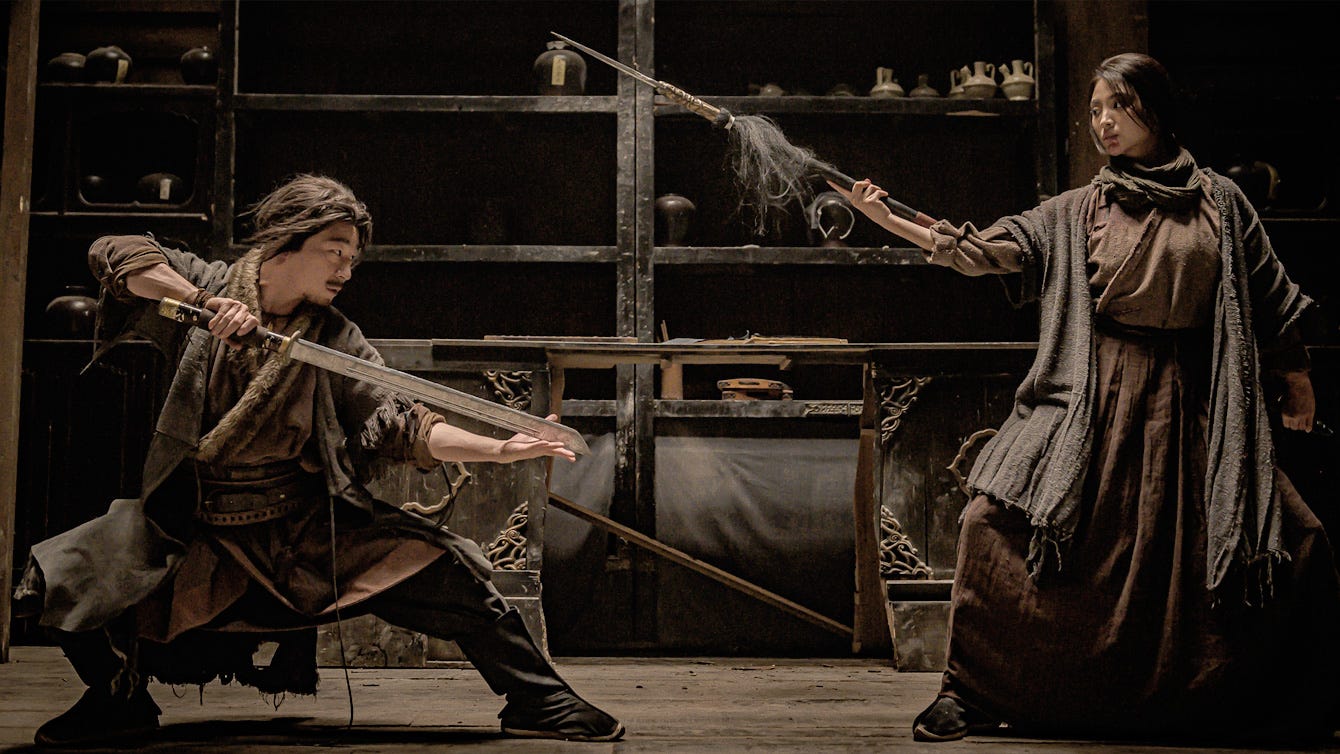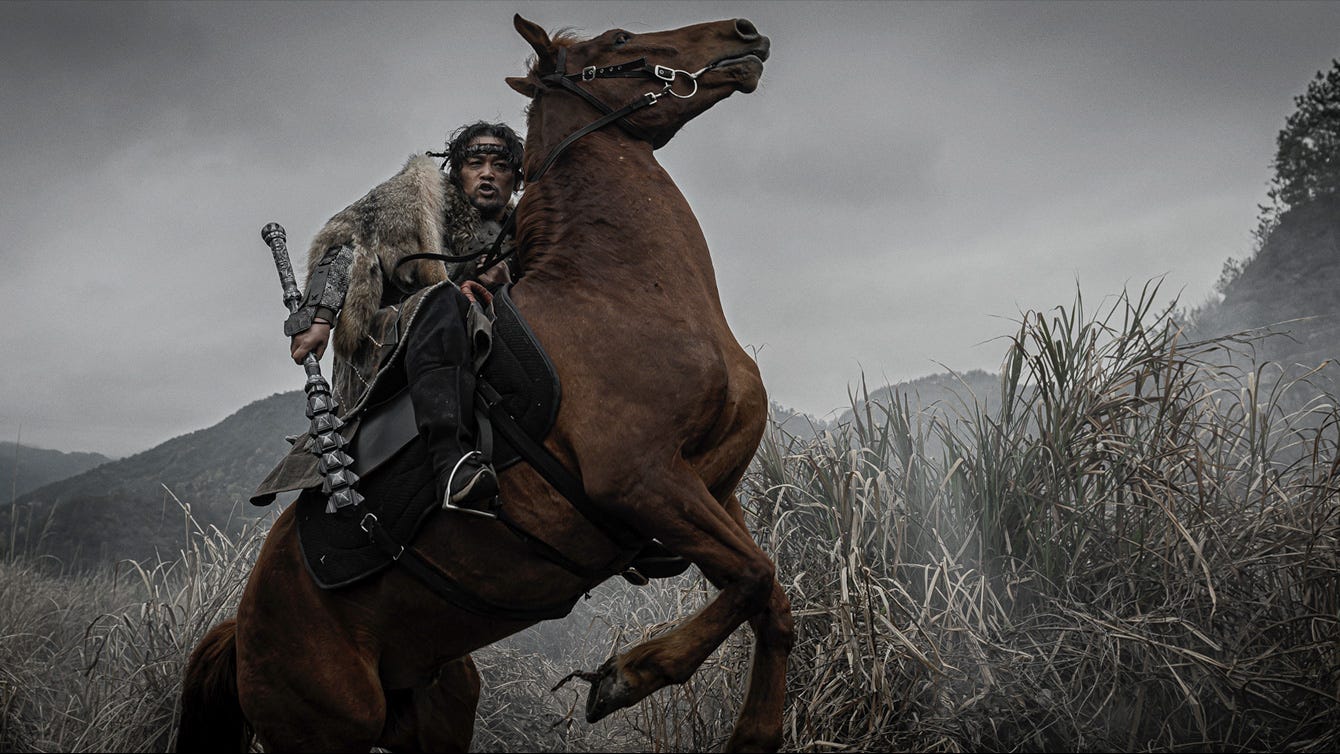Nine-Ring Golden Dagger review: A solid new entry in a classic wuxia set-up
Out now on VOD and Hi-YAH!
Nine-Ring Golden Dagger may not feature much of the titular weapon in action (in truth, it’s more of a nine-ring golden sword), but this new piece of martial arts historical fiction has creative choreography, some compelling characters, and a powder keg of an environment to house it all. It doesn’t reach the high levels of visual splendor and thematic cohesion we’ve seen from the best recent Chinese historical action movies, but it’s an entertaining new entry that is now available for streaming on Hi-YAH!, or for digital rental or purchase on VOD platforms.
Yang Ye, a great general who wields the nine-ring golden dagger, is slain in battle after killing many, many opponents with it single-handedly. After his death, two of his daughters decide to retrieve the sword, stealing it from the prime minister’s estate. On their way back home, they stop by an old inn, which quickly becomes a crowded and tense place to be, with dangerous guests and shifting alliances.
The movie’s foundation may be the inn, but the characters who gather there are the walls. First, we meet Yang Ye’s daughters – bold, cunning, capable, and, unfortunately, pretty similar to each other – who are committed to returning their father’s weapon home. Then there’s the former soldier that joins them, Jiao Guangpu, and his charming staff – a chef (a skilled fighter) and a towering waiter (who is approximately twice as tall as anyone else in the movie). When the Yang sisters arrived, Jiao and his staff had just finished conning and tying up the bumbling nephew of the Empress, whose outlook on this situation seems to switch from “aggrieved hostage” to “actually this place is kind of nice, I might as well help out.” And then they’re all joined by a legion of enemy soldiers who come looking for the legendary weapon, making for a very full (and violent) house.
“Multiple groups converging on an inn” is a classic wuxia setup that’s always a fun time, and the location is the true star of Nine-Ring Golden Dagger. It’s an appropriately dirty, run-down place that has seen its fair share of parties and brawls and looks plenty capable of hosting either. Its messy but inviting two-story interior reminded me of both Al Swearengen’s Gem Saloon in Deadwood and the saloon from Nicholas Ray’s excellent Johnny Guitar. It’s also a great location for fighting, with lots of objects to balance off of and break – support beams, tables, chairs, a staircase – and a big enough space that multiple distinct fights can be happening near the kitchen, on the tables, upstairs, etc.
The action design uses the setting creatively, with an appealing mix of realistic and fantastical choreo to variably build moments of humor and tension and make the fighting feel dirty rather than glossy. A particular highlight that shows both the movie’s wave length and how it uses the space of the inn: During a climactic fight, a man jumps into battle but lands through a table, carrying the frame around him as he continues to scrap.
Some other fun action beats and staples you can expect: A fighter kicks a sword out of its hilt and catches it in mid-air, a Scary Villain With Big Hammer (always a plus), intricate spear fighting, acrobatic wire work, and impressive stunt falls. The action feels grounded in a consistent sense of space and geography: The ever-present location of the inn helps, but an early scene set in tall grass manages to keep locations legible to the audience while keeping the combatants obscured from each other.
First-time filmmaker Feng Xiaojun does an admirable job with what appears to be a smaller budget than other contemporary Chinese historical epics, relying on the strength of the inn location instead of massive battle sequences. But Feng also adds some satisfying flourishes – an early scene where the sisters practicing their sword fighting is intercut with images of fish chasing after each other, and a later fight scene between two eventual allies zooms into one of the combatants’ eyes mid-battle, transforming into a dance sequence (complete with a spotlight).
Nevertheless, Nine-Ring Golden Dagger’s can’t reach the epic scale or visual wonder of the best recent entries in the genre (Shadow and 100 Yards come to mind). This is partly a budget issue, lacking some of the bigger set pieces (or crisp, colorful cinematography) you might expect, but it also plays out in the narrative – while Nine-Ring Golden Dagger hints at themes of family, loyalty, and honor, ultimately the movie’s interest in these topics is mostly as axes for the plot to revolve around.
Even with those shortcomings, Nine-Ring Golden Dagger is another entertaining and well-constructed historical action movie from China that shines because of its use of its central location and how its action design matches with that choice. A massive budget certainly helps when making compelling action, but if you have a sense of what you want to do, and a place where you can do it well, you’re off to a great start.







